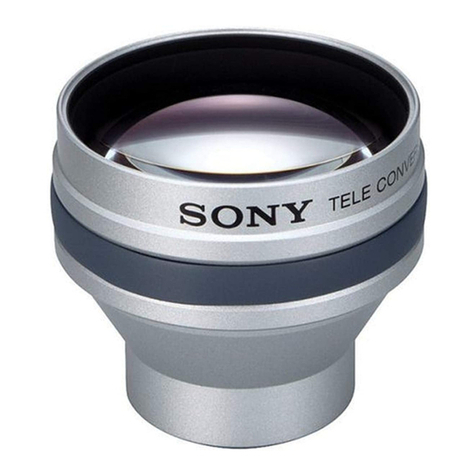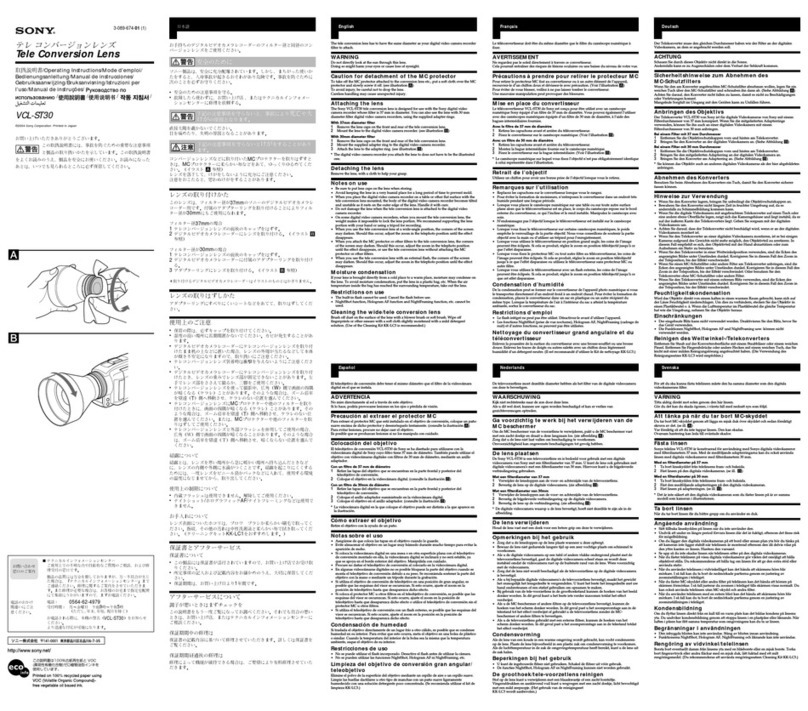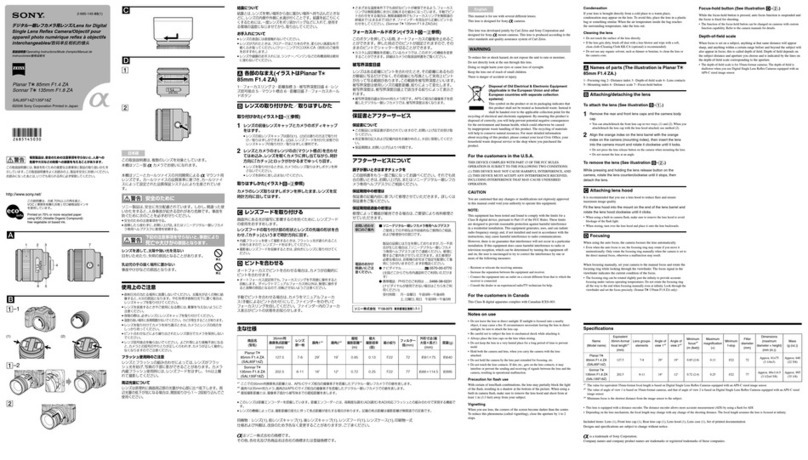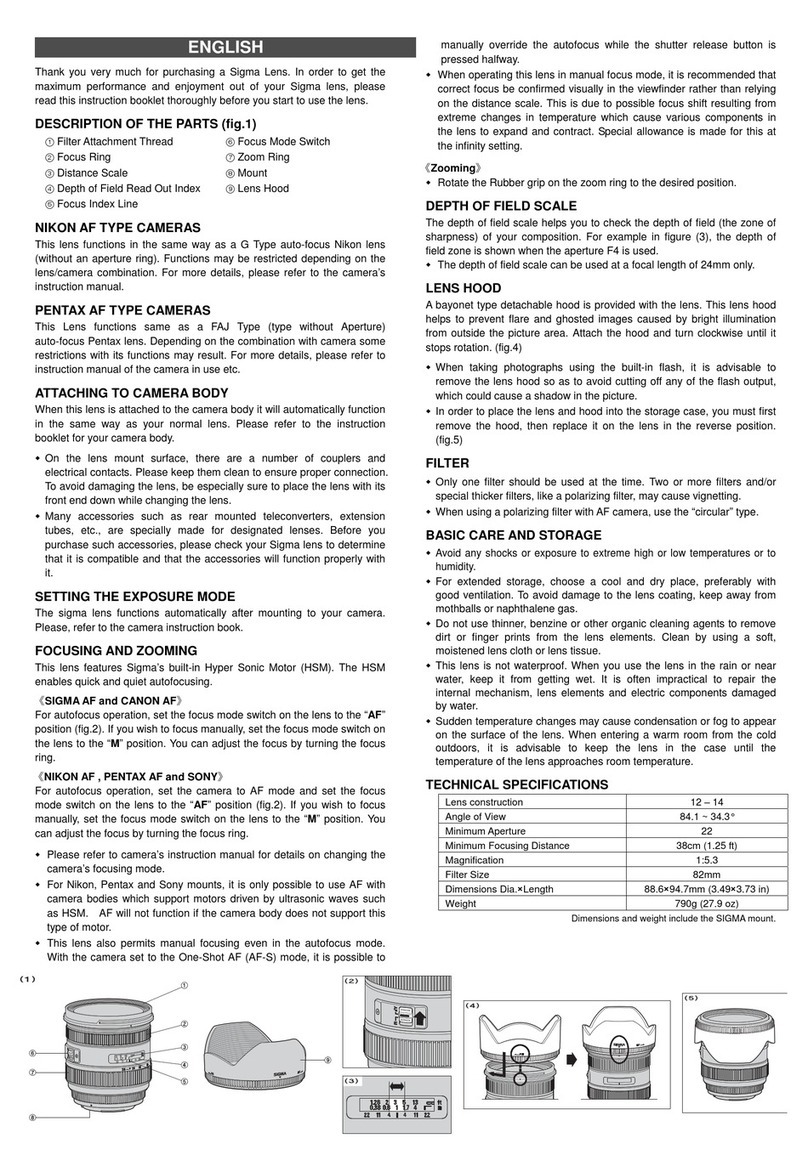
2
Focusing
The Kiron 105mm f2.8 focuses continuously from infinity to 0.35 meters (13.8 inches), where the
reproduction ratio is 1:1 (life-size). To focus, look through the viewfinder of your
camera, and turn the focusing ring until the subject appears sharp and clear.
The distance scale is marked in both meters (white) and feet (blue). These figures indicate the
distance from the subject to the film plane of the camera.
Reproduction Ratios
The reproduction ratio is the relationship between the size of the image on the film and the
actual size of the subject. For example, if the image on the film is one-half the size of the actual
subject, then it is said to have been reproduced at 1:2, or 1/2 life-size.
The reproduction ratios from 1:10 to 1:1 are indicated on the lens barrel in gold. To
photograph an object at a predetermined reproduction ratio of, for example, 1:2, turn the
focusing ring until it lines up with the mark opposite 1:2 on the lens barrel. Then move the lens
closer to, or farther from the subject, until it appears sharp and clear in the camera’s viewfinder.
Or, if the reproduction ratio is not known in advance, focus until you have the desired image in
the viewfinder. Then look at the lens barrel to see what reproduction ratio will be achieved.
Since there are no click-stops involved, reproduction ratios between those marked on the
barrel, e.g. 1:6, 1:4, are easily achieved.
Greater than 1:1 reproduction ratios can be achieved with the addition of a Kiron 2X MC7
teleconverter. This is a seven-element, multicoated teleconverter that doubles the focal length
of the lens, as well as doubles the reproduction capabilities.
Depth of field
Depth of field refers to the area of acceptable focus in front of, and behind the plane of sharpest
focus. There is a depth of field scale marked in white on the lens barrel.
However, since depth of field is so small at high reproduction ratios, a lens opening of no larger
than f/16 is recommended. If your camera has the capability, it is desirable to
preview the depth of field prior to taking the photograph, so you can see the area which will be
in focus.
For the sharpest photographs, precise depth of field information is essential. Please use the
depth of field tables provided on page 4, rather than simply reading from lens
barrel.
Camera and Lens Steadiness
Again, because of the small depth of field during close up work, even slight movement can
cause your subject to be out of focus. A steady camera and lens are required for the best results.
The use of a tripod, as well as a cable release to activate the camera’s shutter, are recommended
for all close up work.






















